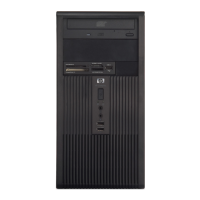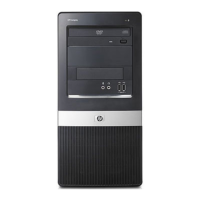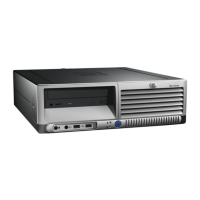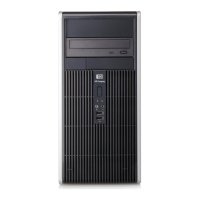Subscriber’s Choice Driver and Support Alerts/Notifications will deliver e-mails notifying you that the
information you subscribed to in your profile is available for review and retrieval. To learn more about
Subscriber’s Choice and create a custom profile, visit
http://h30046.www3.hp.com/subhub.php.
Retired Solutions
Two software packages, Altiris Local Recovery, and Dantz Retrospect, will no longer be shipping on HP
business desktops, notebooks, or workstations. Starting with new business desktops, notebooks, and
workstations released in 2006, all will ship with HP Backup and Recovery Manager.
ROM Flash
The computer's BIOS is stored in a programmable flash ROM (read only memory). By establishing a
Supervisor password in the Computer Setup (F10) Utility, you can protect the ROM from being
unintentionally updated or overwritten. This is important to ensure the operating integrity of the computer.
Should you need or want to upgrade the BIOS, you may download the latest BIOS images from the HP
driver and support page,
http://www.hp.com/support/files.
CAUTION: For maximum ROM protection, be sure to establish a Supervisor password. The
Supervisor password prevents unauthorized ROM upgrades. System Software Manager allows the
system administrator to set the Supervisor password on one or more PCs simultaneously. For more
information, visit
http://www.hp.com/go/ssm.
Remote ROM Flash
Remote ROM Flash allows the system administrator to safely upgrade the BIOS on remote HP
computers directly from the centralized network management console. Enabling the system
administrator to perform this task remotely on multiple computers results in a consistent deployment of,
and greater control over, HP PC BIOS images over the network. It also results in greater productivity
and lower total cost of ownership.
NOTE: SSM does not currently support remote ROM flash on systems that have Windows Vista
BitLocker enabled and are using TPM measurements to protect the BitLocker keys because flashing
the BIOS would invalidate the trust signature that BitLocker created for the platform. Disable BitLocker
via Group Policy in order to flash the system BIOS.
The computer must be powered on, or turned on through Remote Wakeup, to take advantage of Remote
ROM Flash.
For more information on Remote ROM Flash, refer to the HP Client Manager Software or System
Software Manager at
http://www.hp.com/go/ssm/.
HPQFlash
The HPQFlash utility is used to locally update or restore the system BIOS of individual PCs from a
Windows operating system.
For more information on HPQFlash, visit
http://www.hp.com/support/files and enter the model number
of the computer when prompted.
Boot Block Emergency Recovery Mode
Boot Block Emergency Recovery Mode permits system recovery in the unlikely event of a ROM flash
failure. For example, if a power failure were to occur during a BIOS upgrade, the ROM flash would be
ROM Flash 23
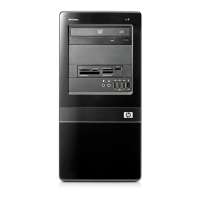
